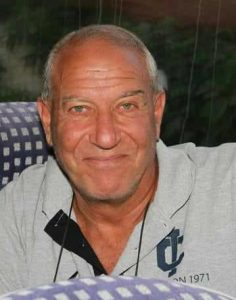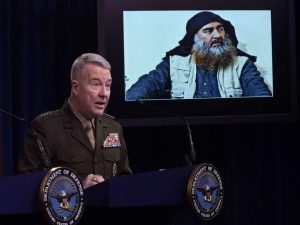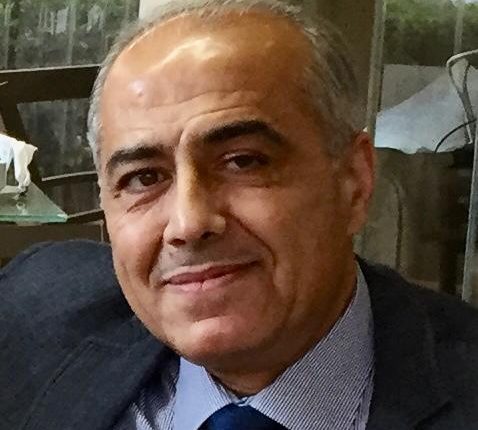INTERODUCING THE NEW ISIS LEADER AFTER KILLING THE DESTRUCTIVE PROFESSOR
By General Monzer El Ayoubi
Translation: Dr Pierre A. Sarkis

For a US special forces to carry out a tactical “air landing” Airborne Force operation to eliminate a terrorist group belonging to the Islamic State, after raiding their position and killing one of their most prominent leaders, Abdallah Qurdash, is a concept that is supposed to take place, as long as the declared and continuous battle by the US administration is to fight terrorism and strike terrorists in their arenas. This is in particular when mission simulation confirms high success rates based on accurate and correct intelligence, in addition to the combination of common factors appropriate to the “combat environment”, to name but a few: climatic conditions, geographical location, time and appropriate timing, low casualties among the attacking forces, avoid or reduce the number of civilian casualties, etc.
But what was really noteworthy at the conclusion of the operation and the achievement of its goal was the media propaganda that was imprinted with the White House mark, after the president of the most powerful country in the world, Joe Biden, held a press conference to announce it, citing some details. Thus, three major headlines could be deduced from the press conference:
1- The elimination of the top terrorist leader is a message to all terrorist organizations in the world.
2- The ability of US armed forces to protect American civilians.
3- The operation was carried out according to his direct orders.
What was meant that had been accomplished, was the need to highlight it and exploit it to show the other image of a US president, who can use the iron fist whenever needed, particularly in the fight against terrorism.
Alternatively, in the analysis and objective reading of the implications, several indicators arise:
1- Contrary to many expectations and calls, there is a decision to cling to the effective American political and military presence on the ground, whether in the region or in the Iraqi and Syrian theaters.
2- Emphasizing the policy of supporting allies, especially with the timing of the operation which coincided with Washington’s agreement to supply the Arab Gulf States, particularly Saudi Arabia and the United Arab Emirates (UAE) with the American weapons they need, in light of the rising tensions and the high level of mutual attacks with the Houthi Organization in Yemen.
3- Perseverance in embracing the Syrian Democratic Forces (QASAD) which Turkey “considers a military arm of the Kurdistan Labor Party (PKK) which is classified on the international terrorist lists”, after the US President praised the PKK for its participation and supporting role.
4- A direct response to the attack by the forces of the terrorist organization ISIS on the Ghwayran prison in the Syrian province of Al Hasaka, especially after accusations were made about the involvement and responsibility of Turkish Intelligence. In the statement by a QASAD spokesperson, Farhad Al-Shami, “the origin of the plan and management of the attack, i.e., the operation room according to documentation, were prepared beyond Syrian borders; the responsibility of the Turkish State in the ISIS attack was major.
5- Sorting out the repercussions of the US withdrawal from Afghanistan, the “Course Correction Policy” showing the resolve of the US leadership in curbing the expansion of the branch of ISIS in Afghanistan and Central Asia “ISIS Khorasan”, especially after carrying out numerous bombing operations causing hundreds of dead and injured.
6- Striking the idea or strategy of Al-Qurashi in rejuvenating ISIS from its defeat, and thus, holding on a geographical belt where terrorist cells could position themselves with the potential to grow, and capable from Idlib in Syria to Kabul in Afghanistan.

On the other hand, regardless of the details of the implementation, from the launching of the attacking force with helicopters from the base of “Ain al Arab” in Northern Syria, to the theater of operations in “Atma” in the countryside of Northern Idlib, and then the retreat and return, it can be confirmed that:
1- The death of the shadow leader of ISIS, Amir Mohammed Saeed Abdul Rahman Mawla, alias Abu Ibrahim al Hahimi Al-Qurashi, or nicknamed Abdallah Qurdash, holder of the status of “destructive professor” for leading the brutal massacre of the Ayzidi minority in Iraq.
2- The failure of the capture and arrest of Al-Qurashi after he detonated himself with an explosive belt and ending the operation by eliminating the gunmen.
3- At least 13 people including 6 children, some of them members of his “Qurashi” family were killed during the air landing operation.
4- A number of the wounded were among the attacking US elite force.
5- The destruction of one of the landing helicopters on the ground by the attacking force after it broke down, which supports the assumption of rapid withdrawal from the theater of operations in order to avoid the circle of the engagement and thus, the high-risk rate.
In a related context, and without mentioning his entire long record of terrorism, starting by being a former officer in late Iraqi President Saddam Hussein’s army, passing through his arrest in 2004 at the US Boca detention camp in Iraq, to the killing of his former leader, Abu Bakr al Baghdadi, in an attack launched by US forces in 2019, it should be noted that the Qurashi terrorist had previously worked as an informant cooperating with, and for the benefit of US military intelligence CIA. He was later able to find a channel of communication with Turkish Intelligence after embarking on timely negotiations with his emir, Al-Baghdadi, to evacuate the staff of the Turkish Consulate in Mosul in 2014 and secure their safe transfer to the Turkish borders. Among the questions asked:
1- Why were drones not used to carry out the mission per the orders of General Kenneth McKenzie, Commander of Central Command, US-CENTCOM, which manages operations in the Middle East theater? It was clear that the decision to capture the terrorist was made, which means using a team of elite SEAL forces for the execution, which is usually used by the military command when dealing with valuable targets; the equation here was simple, since failure to capture Al-Qurashi alive equaled the failure to obtain important information during his interrogation.
2- Were there any involvement or intelligence assistance by the Israeli Foreign Intelligence Service? Channel 13 reported a comment on the role of Mossad in confirming the whereabouts of Al-Qurashi, in addition to ground support in directing the attacking force. The Mossad’s role is also part of military cooperation and information coordination with QASAD, as a translation of the enemy’s strategy to create a Kurdish State, a deversoir or gap, loyal to it in the middle of the hot spot, the Turkish, Syrian and Iraqi triangle rich in oil and natural resources.
3- Who is Al-Qurashi’s prospective successor? Although there is no mention of the new leader at present, it is certain his nomination will be secret and pre-conceived, i.e., before the death of the current leader. The most likely name is Hajj Jumaa Awad Al-Badri, the brother of Abu Bakr Al-Baghdadi and Chairman of the current Shura Council, who will run the organization’s affairs at this stage until he is pledged allegiance to, despite the attempt of the so-called Shihab Al-Muhajir, the Emir of ISIS in Central Asia to lead the organization.
It is clear that the organization will go through a phase of temporary “imbalance”, and will witness several divisions before the allegiance to the new Caliph, but it will not reduce its cohesion and operational ability at terrorism, especially since it adopted a cluster structure and flexible independent cells after its defeat in Syria and Iraq by the American Coalition Forces.
Finally, and from the premises of the “Plan for Comprehensive Action”, the process of neutralizing the terrorist Abdullah Al-Qurashi was required in the framework of the pre-emptive war on terrorism commensurate with, or following the success of reaching a renewed agreement on the Iranian nuclear program, where both of them are pivotal milestones in the career of US President Joe Biden for a presumed passage, previously followed by his predecessors towards a new four-year term.
Beirut, 06/02/2022
*Scholar in Security and Strategic Affairs

